Want to know how to remove pesticides and herbicides from well or city drinking water supplies?
In this guide, we’ve shared our 3 top recommended methods for removing these contaminants from tap water, as well as other important information that you should know about herbicide and pesticide contamination.
📌 Key Takeaways:
- Pesticides and herbicides are chemicals used to control unwanted pests and weeds that could hinder crop growth.
- These contaminants have several known human health risks, including cancer and nervous system problems.
- The best ways to remove or reduce pesticides and herbicides are reverse osmosis, ceramic filters, carbon filtration, and water distillers.
Table of Contents
- 🤔 What Are Pesticides And Herbicides?
- 🔎 Common Pesticides In Tap Water
- 🚱 How Do Pesticides And Herbicides Get Into Water?
- 🩺 Potential Health Effects Of Herbicides And Pesticides
- 📉 Legal Limit For Pesticides & Herbicides In Water
- 💯 4 Best Methods To Remove Pesticides & Herbicides From Water
- 🧪 How To Detect Pesticides & Herbicides In Water
- 📑 Final Word
🤔 What Are Pesticides And Herbicides?
Pesticides and herbicides are agricultural chemicals that are used to control weed growth and kill unwanted pests on crops.
Herbicides are actually a type of pesticide. Other pesticides include insecticides, nematicides, rodenticides, insect repellants, animal repellants, fungicides, and bacteriacides.
Different pesticides are used in different applications, depending on the crops that need protecting and the pests that they need protecting from.
There has been a growing controversy over the use of pesticides and herbicides over the past few years, and over 140 pesticides have been banned or severely restricted as a result of emerging research into their health effects.
Hundreds of synthetic pesticides still exist today, and many are toxic to humans and known carcinogens.
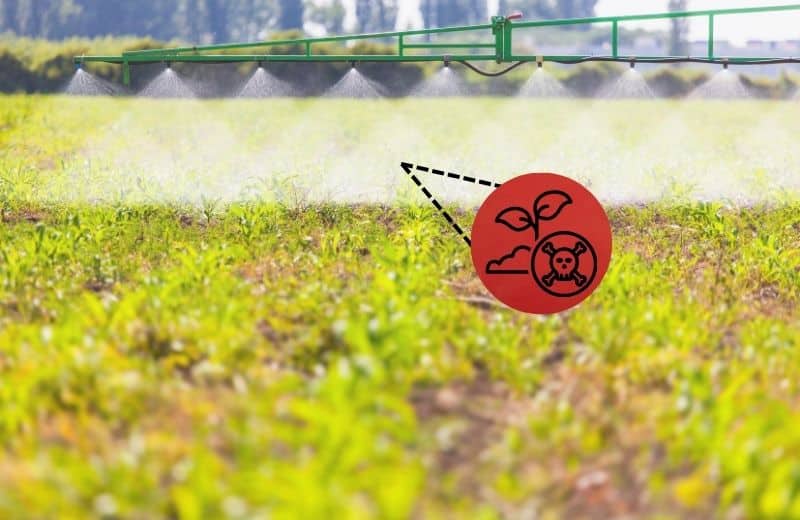
🔎 Common Pesticides In Tap Water
Some of the most well-known tap water pesticides are:
- 2,4-D: A non-agricultural herbicide that was used widely to treat lawns and golf courses and can damage the kidneys and liver.
- Atrazine: An agricultural herbicide that can increase the risk of lymphoma, leukemia, and uterine, breast, and ovarian cancer. It has also been linked to birth defects and reproductive tumors.
- Alachlor: An agricultural herbicide that causes thyroid, kidney, liver, and spleen damage.
- Cyanazine: A herbicide that may affect the endocrine and nervous systems.
- Glyphosate: The most widely used herbicide in the US, which may increase the risk of cancer, endocrine disruption, and brain effects.
- Hexazinone: A broad-spectrum herbicide that doesn’t have any known toxic effects of concern.
- Prometon: A herbicide that’s moxtly toxic to birds and aquatic life.
- Tebuthiuron: Another broad-spectrum herbicide that’s moderately toxic to humans and may decrease red blood cell counts and damage the pancreas.
Even many pesticides that were banned decades ago are still present in the environment today and continue to contaminate our drinking water supplies.
Research into the health problems associated with the common herbicides and pesticides continues.
🚱 How Do Pesticides And Herbicides Get Into Water?
Toxic pesticides may enter drinking water supplies through a number of avenues:
- Due to pesticide runoff from lawns and farmland
- Through soil seepage, where rainwater and snow carries pesticides into underground springs and aquifers
- When leftover pesticides are poured down drains or sinks
- Through industrial wastewater
- Due to improper agricultural waste practices
Surface loss and leaching through soil layers are the two most common ways that pesticides end up contaminating surface water and groundwater supplies.
Any water sources that have close interconnection with surrounding soils, including streams, underground aquifers, and lakes, are all particularly susceptible to contamination from pesticides and herbicides.
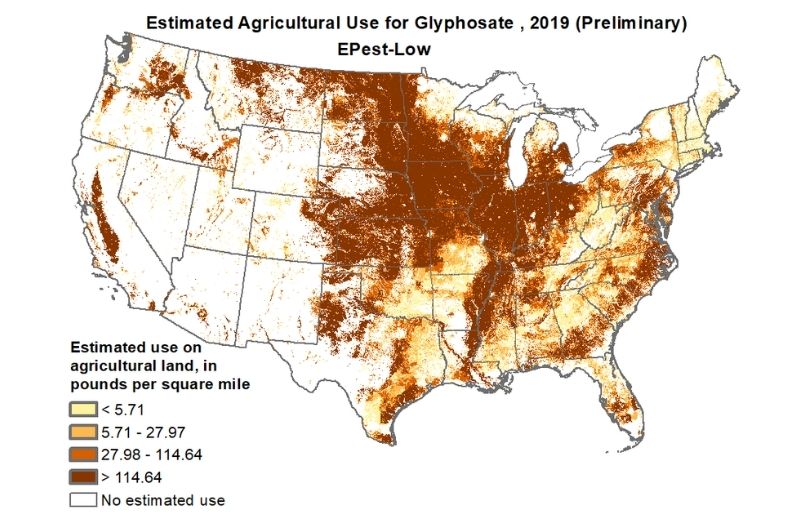
🩺 Potential Health Effects Of Herbicides And Pesticides
Pesticides and herbicides might have their role in agricultural processes, but they’re dangerous to human health.
Different pesticides and herbicides have different potential health effects.
Some of the possible health risks associated with ingesting herbicides and pesticides in water are:
- Nervous system problems
- Cancer
- Liver and kidney damage
- Blood problems
- Anemia
- Reproductive effects
- Cardiovascular system damage
- Eye damage & cataracts
If you’re concerned about a specific herbicide or pesticide in your water, a Google search of this chemical will tell you more about its potential health effects.
Most agricultural chemicals increase the risk of cancer.
Drinking water containing high concentrations of these chemicals over a long period makes you the most susceptible to their health effects.
📉 Legal Limit For Pesticides & Herbicides In Water
The US Environmental Protection Agency (EPA) has set legal limits for many pesticides in tap water – but there are many others that currently aren’t regulated at all.
Public water suppliers must reduce the regulated contaminants to specific concentrations, called Maximum Contaminant Levels (MCLs), to prevent the health effects that are associated with ingesting larger quantities of these chemicals.
Here are the regulated pesticides and herbicides, and their MCLs, according to the EPA’s National Primary Drinking Water Standards:
| Contaminant | MCLs |
|---|---|
| Alachlor (a herbicide used on row crops) | 0.002 mg/L |
| Atrazine (also used on row crops) | 0.003 mg/L |
| Carbofuran (a soil fumigant used on alfalfa and rice crops) | 0.04 mg/L |
| Chlordane (a now-banned termiticide) | 0.002 mg/L |
| Chlorobenzene (a pesticide ingredient) | 0.1 mg/L |
| 2,4-D (a herbicide used on row crops) | 0.07 mg/L |
| Dalapon (a herbicide used on rights of way) | 0.2 mg/L |
| 1,2-Dibromo-3-chloropropane, or DBCP (a soil fumigant used on various crops) | 0.0002 mg/L |
| Dinoseb (a herbicide used on vegetables and soybeans) | 0.007 mg/L |
| Diquat (a herbicide) | 0.02 mg/L |
| Endothall (a herbicide) | 0.1 mg/L |
| Endrin (a banned insecticide) | 0.002 mg/L |
| Glyphosate (a herbicide) | 0.7 mg/L |
| Heptachlor (a banned termiticide) | 0.0004 mg/L |
| Hexachlorobenzene (a disused pesticide) | 0.001 mg/L |
| Lindane (an insecticide) | 0.0002 mg/L |
| Methoxychlor (an insecticide) | 0.04 mg/L |
| Oxamyl (Vydate, an insecticide) | 0.2 mg/L |
| Picloram (a herbicide) | 0.5 mg/L |
| Simazine (a herbicide) | 0.004 mg/L |
| Toxaphene (an insecticide) | 0.003 mg/L |
| 2,4,5-TP (Silvex, a banned herbicide) | 0.05 mg/L |
Many of the most commonly detected pesticide and herbicide chemicals are regulated by the EPA, but there are tens more that have the potential to contaminate water supplies and may have health effects, but are currently unregulated.
EPA regulations also only apply to public drinking water supplies, so if you’re on a private well system, you’ll need to educate yourself on agricultural chemicals and test your water for various pesticides/herbicides that might be used in your area.
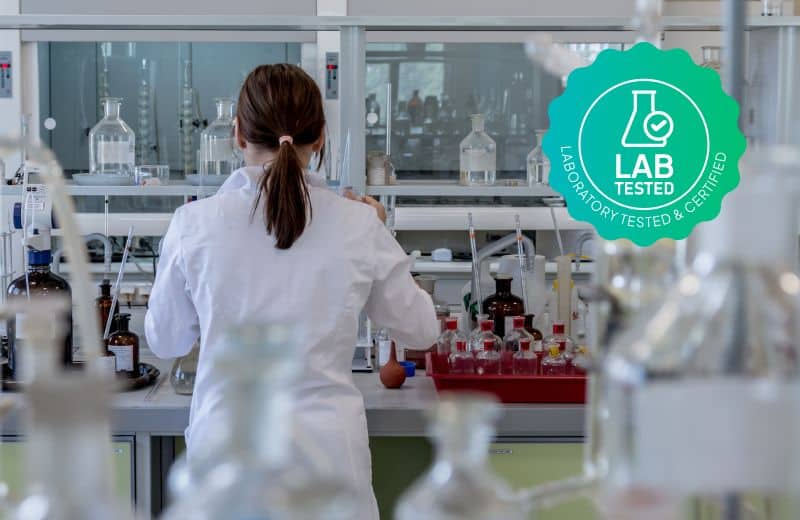
💯 4 Best Methods To Remove Pesticides & Herbicides From Water
Here are our top four recommended methods to remove pesticides and herbicides from your drinking water.
Activated Carbon Filters
Pesticide/herbicide removal: Up to 99%
If you have a smaller budget or you’re looking for the most adaptable filtration method for herbicides and pesticides removal, we recommend an activated carbon water filter.
Activated carbon filters use a method called adsorption to pull pesticides, herbicides, and other chemicals (like chlorine) from water. The effectiveness of activated carbon media to remove herbicides and pesticides depends on the filter’s surface area, the water flow rate, and the age of the filter.
You can find activated carbon filters in a variety of applications. There are whole-home filtration systems that use a backwashable tank loaded with carbon media, systems with replaceable carbon cartridges for whole-home and under-sink installation, faucet filters, pitcher filters, and countertop filter systems.
Ceramic Filters
Pesticide/herbicide removal: Up to 99%
Ceramic filters have a ceramic media that sends water through a network of tiny pores, trapping contaminants along the way.
These filters are effective in trapping a range of contaminants, down to tiny microorganisms like viruses and bacteria. The best ceramic water filters can remove up to 99.99% of pesticides and herbicides, as well as lead, cysts, sediment, and other heavy metals and chemicals.
Ceramic filters may be used as a filter stage in a multi-stage water treatment system. The most popular use of ceramic filter media is in countertop water filters that use gravity filtration.
Often, ceramic filter media is combined with additional media, such as activated carbon or ion exchange, to enhance its contaminant removal abilities.
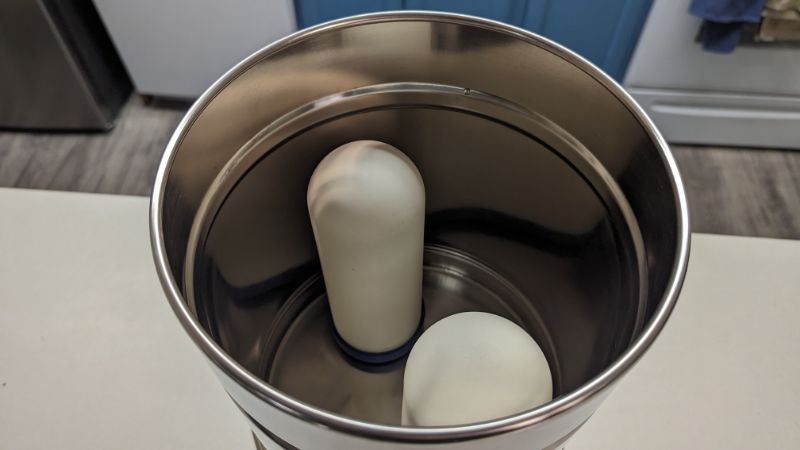
Reverse Osmosis Systems
Pesticide/herbicide removal: Up to 99%
Reverse osmosis systems are a step up from activated carbon filters. They combine one or two carbon filtration cartridges with a sediment filter and a reverse osmosis membrane, which rejects up to 99% of all total dissolved solids, including herbicides and pesticides.
A reverse osmosis system doesn’t just filter water – it purifies it. If you’re looking for the most comprehensive filtration solution that will remove not only pesticides and herbicides, but also the majority of other chemicals, heavy metals, microorganisms, and other contaminants, you’ll find that an RO system meets your needs.
You can buy RO drinking water systems for under-sink and countertop use, as well as POE reverse osmosis filters that purify water that’s delivered to your whole home. The only major setback of RO is cost – reverse osmosis filters are expensive.
Water Distillers
Pesticide/herbicide removal: Up to 99%
Water distillers are another highly effective way to remove pesticides and herbicides from drinking water.
These countertop units purify batches of water through the process of evaporation and condensation. A distiller boils water until it vaporizes, leaving the contaminants behind in the boiling chamber. This water vapor then travels into a separate container, where it condenses drop-by-drop. This process takes around 5 hours to purify a single 1-gallon batch of water.
Water distillers are our third-choice option, despite their effectiveness. We would advise choosing an activated carbon filter or a reverse osmosis system instead, since these filters are more adaptable and much faster to filter water.
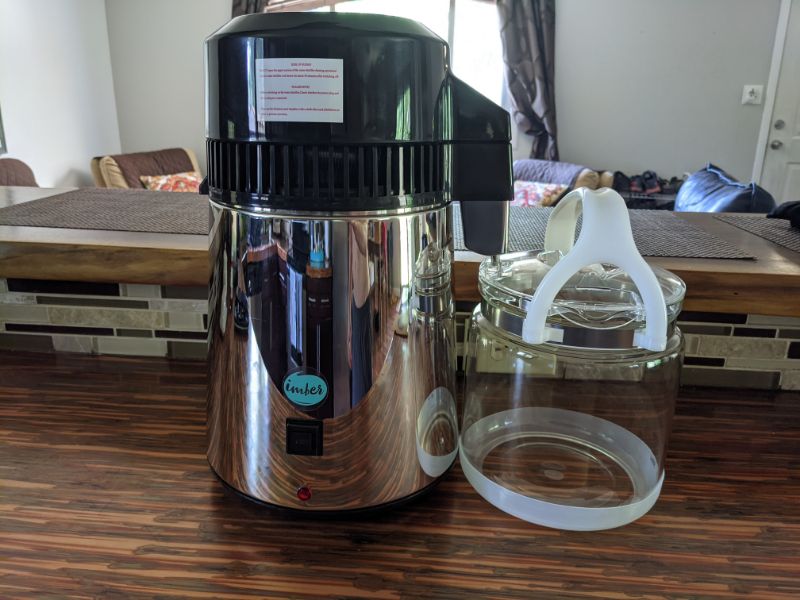
🧪 How To Detect Pesticides & Herbicides In Water
The best way to detect pesticides and herbicides in your water is with a tap water test.
These contaminants are often invisible, tasteless, and odorless, which means they’re undetectable by sight, taste, or smell.
We recommend purchasing a laboratory test to get an accurate analysis of your water’s pesticides and herbicides concentrations.

The process of testing your water with a lab test usually goes like this:
- Purchase a test kit from an accredited laboratory.
- Wait for the lab to send you the test kit, which should include instructions and vials for collecting samples.
- Collect your samples and post them back to the laboratory.
- Wait for your results to be delivered via email.
Once you have your results, you can decide on the best method of water treatment depending on the concentration of contaminants detected.
We also advise taking this opportunity to test for other contaminants that you suspect may be present in your water supply, so that you can find a water treatment system that also removes these impurities.
📑 Final Word
Pesticides and herbicides may cause dangerous health effects, but the good news is that they’re easily removed with an at-home filtration system.
Hopefully, you now feel confident in how to remove pesticides and herbicides from your water supply.
Do you need to remove pesticides and herbicides from your water? It depends on your situation.
If you’re on a city water supply, your water should only contain trace amounts of pesticides and herbicides below the legal level.
So, there’s no urgent need to remove these contaminants because they’re not found in concentrations that could be harmful to health (according to EPA research).
Still, you might not want to drink even trace amounts of chemicals that are known to cause cancer, nerve damage, and birth defects. In this case, look for a water filter system that will reduce these chemicals as much as possible.
If you get your water from a residential well, it’s your responsibility to test your water for pesticides and herbicides, especially if you live in an area with high agricultural activity. Contact your local authority to discuss the likelihood of groundwater pesticide contamination in your area.
